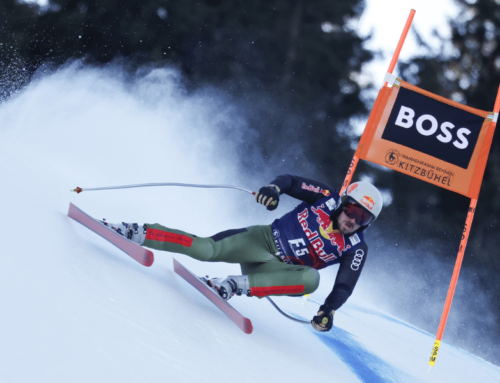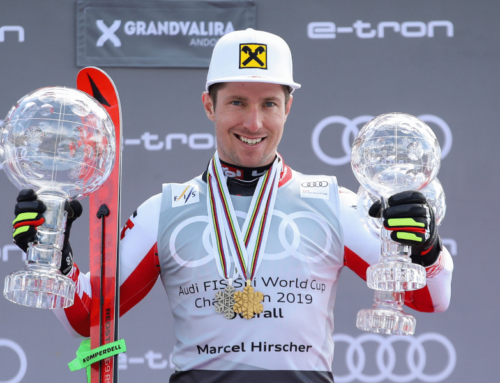Proposed early-season Matterhorn World Cup speed races gain momentum
Imagine downhill racers launching themselves from a 3,899-meter start altitude, racing in the shadow of the majestic Matterhorn, proceeding to descend full-gas over the Italian border and finishing in the charming resort of Cervinia. Sounds like a dream?
With cooperation between the Swiss Ski Federation and the Italian Winter Sports Association (FISI), along with the tourist and ski destinations of Zermatt and Cervinia, this dream appears closer to reality. The project is labeled “The Matterhorn World Cup” and could entirely reshape the FIS World Cup calendar.
Meetings between the various parties and stakeholders are proceeding and if all proceeds smoothly, men’s and women’s speed races in Zermatt/Cervinia could happen on consecutive weekends between mid-October and mid-November, as early as 2022. The early season races are designed to avoid conflict from other competitions and venues on a busy season schedule.
Key players involved in the course design and slope development are Swiss 2010 Olympic champion Didier Défago and renowned downhill course sculptor Bernhard Russi. Two FIS race directors also made exploratory visits to the proposed site this spring.
The men’s downhill is proposed to start from Rollin’s Hump (3,899m above sea level), in Switzerland, with the finish planned for Laghi Cime Banche (2,814m), in Italy. The unique race would attain the distinction of having the highest start altitude of any race worldwide.
Swiss Ski president Urs Lehmann is excited about the vision for a thrilling new downhill course coming closer to fruition.
“The speed opening – downhill and super-G races – would start on the Matterhorn on the Swiss side and having the finish area in Cervinia on the Italian side,” Lehmann tells Ski Racing Media.
“With this project, we would start the season earlier, taking pressure off from the World Cup schedule and giving more room for other projects like staying one or two weeks longer in North America, or maybe we even come back in March.”
“We have a roadmap – we would like to have European Cup. I’m not sure if we would make it for 2022, or later in 2023, and then the year after we could get it on the World Cup calendar,” Lehmann explained. “We are introducing the project to the Alpine Committee this spring.
“This is not something just up in the clouds – this is really close to becoming real.”
Good for racers?
Veteran U.S. Ski Team downhiller Steven Nyman loves the idea of racing a new course in the latter stage of his career; however, he has scheduling and other concerns about the timing of the race.
“I think it’s a fantastic idea, but what I like about the current schedule is how the races ramp up difficulty and the thing I question is how prepared would the athletes actually be if it is difficult,” Nyman tells Ski Racing Media.
“It is hard enough to get good training to be prepared for a difficult downhill. So for this to be reality the Swiss Ski Federation would have to work with other nations and open their doors to good viable training on their glaciers, something they haven’t done much of,” he says.
Nyman notes that the race might present a quicker-than-normal transition from North America to Europe for the U.S. downhillers. Typically, during that time of year — certainly by early November — American and many international racers are camped out at the Copper Mountain Speed Center in Colorado.
“Our training bulk mainly occurs in Copper starting in November, which is hit or miss. Sometimes we don’t get around to running full-length downhill until maybe a week before Lake Louise, while sometimes it is a lot earlier,” said Nyman. “But the idea of adding a new track under the Matterhorn would be fantastic. … I wish I would be around to run it – if I make it to 22-23, it sounds like I possibly could.”
Working in collaboration with Switzerland’s Lehmann, Italian Winter Sports Association president Flavio Roda also endorses the multi-nation project.
“This is not primarily a project by two countries, but an opportunity for the entire ski world,” Roda said. “It offers the great opportunity to hold an international World Cup speed opening in the future. Italian winter sports will do everything in their power to do their part.”
The innovative concept of staging speed races amid the breathtaking backdrop of of the world-renowned Matterhorn is not entirely new. And the 3S lift connecting Testa Grigia to the Klein Matterhorn, which is currently under construction, will make the vision a real possibility come 2022.
Herbert Tovagliari, the Chairman of the Board of Directors of Cervino SpA, says the project can succeed because of the close cooperation between the Italian and Swiss ski resorts.
“The two tourist destinations Zermatt and Cervinia have operated a common ski area for many years,” Tovagliari says. “This project brings us even closer together – a sports event like this is something unique and fantastic for Switzerland, as it is for Italy. The close cross-border cooperation shows the additional opportunities in the Matterhorn region for both sides.”
Tovagliari’s counterpart, Franz Julen, the Chairman of the Board of Directors of Zermatt Bergbahnen AG, echoes similar thoughts while emphasizing the region’s near-guarantee for early season snow coverage.
“There is nowhere else where speed races can be held so early in a World Cup season as in the domain ski area of the Matterhorn, on the border between Italy and Switzerland,” Tovagliari says. “Furthermore, the necessary infrastructure for this already exists in large part, which would make the event exemplary in terms of sustainability”.
The Matterhorn races would become the first in World Cup history to take place on transnational territory, with start and finish in different countries.
Follow Brian on Twitter – @Brian_Pinelli





















